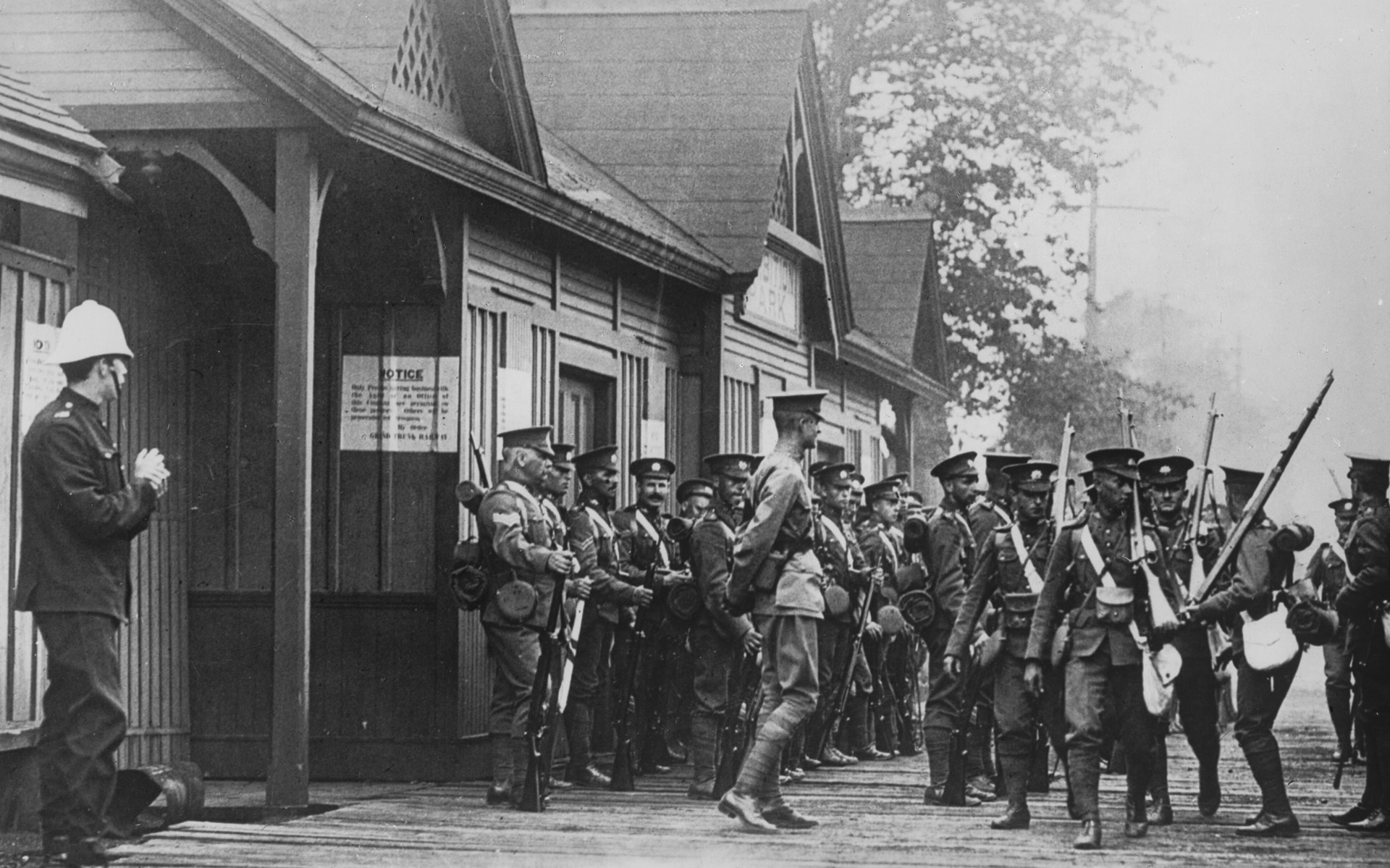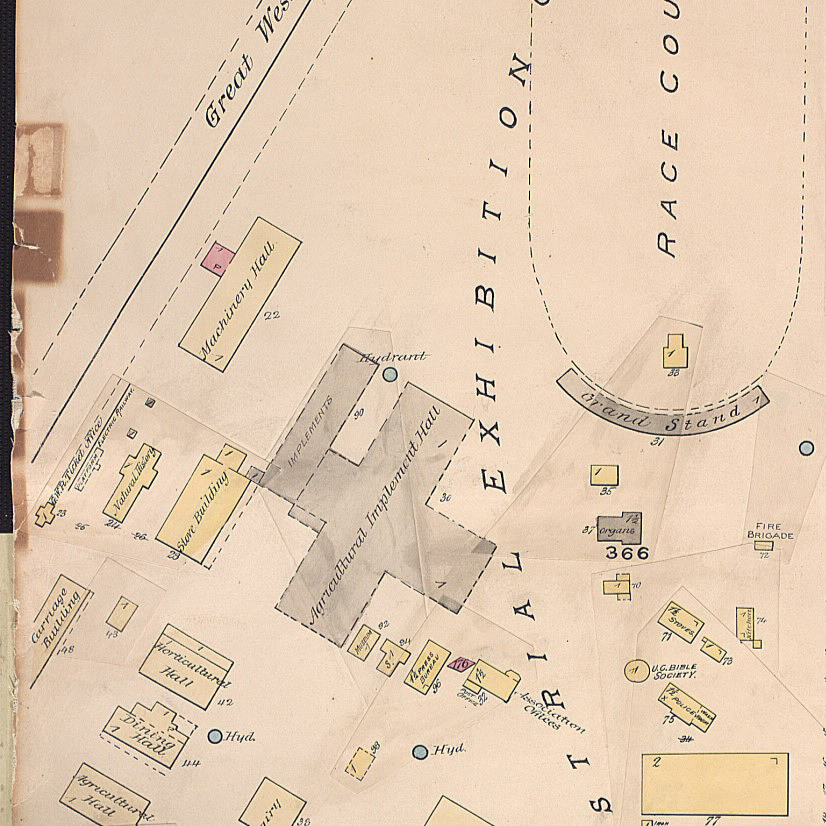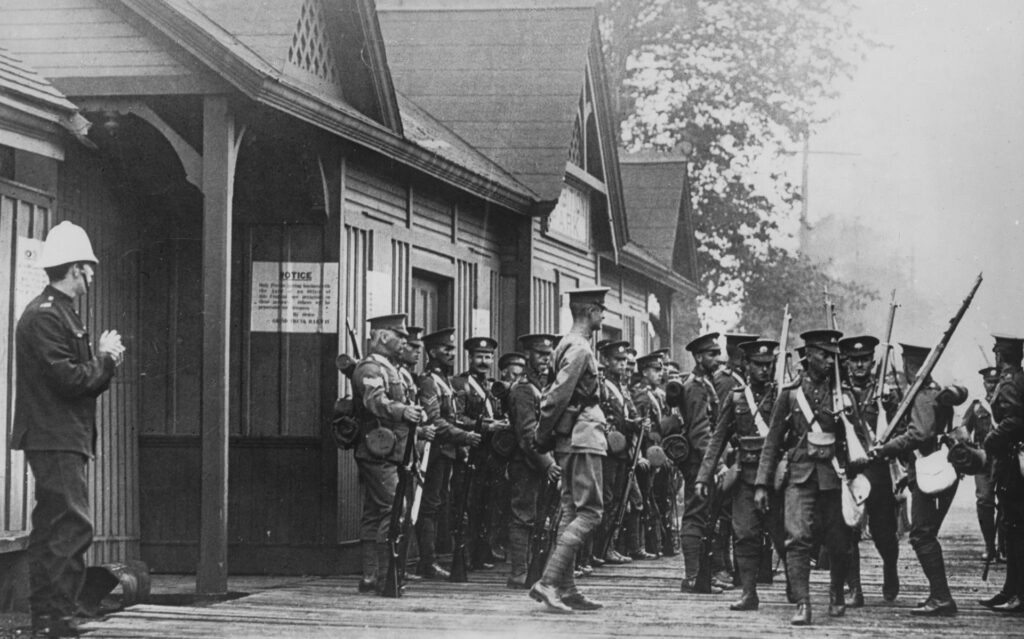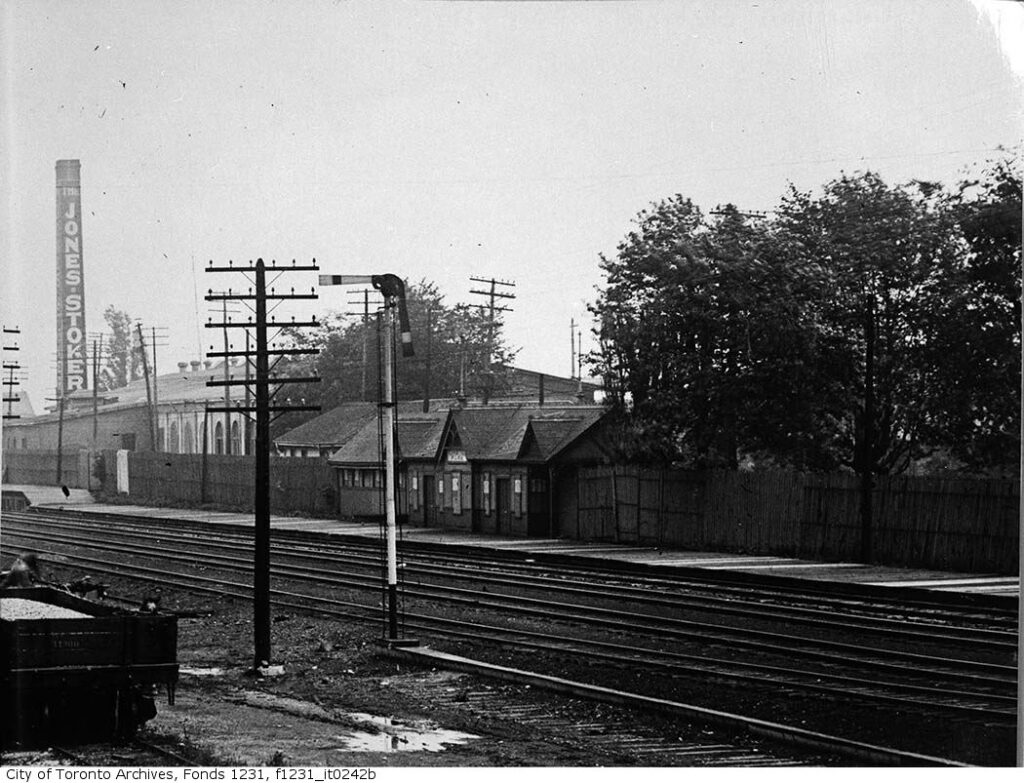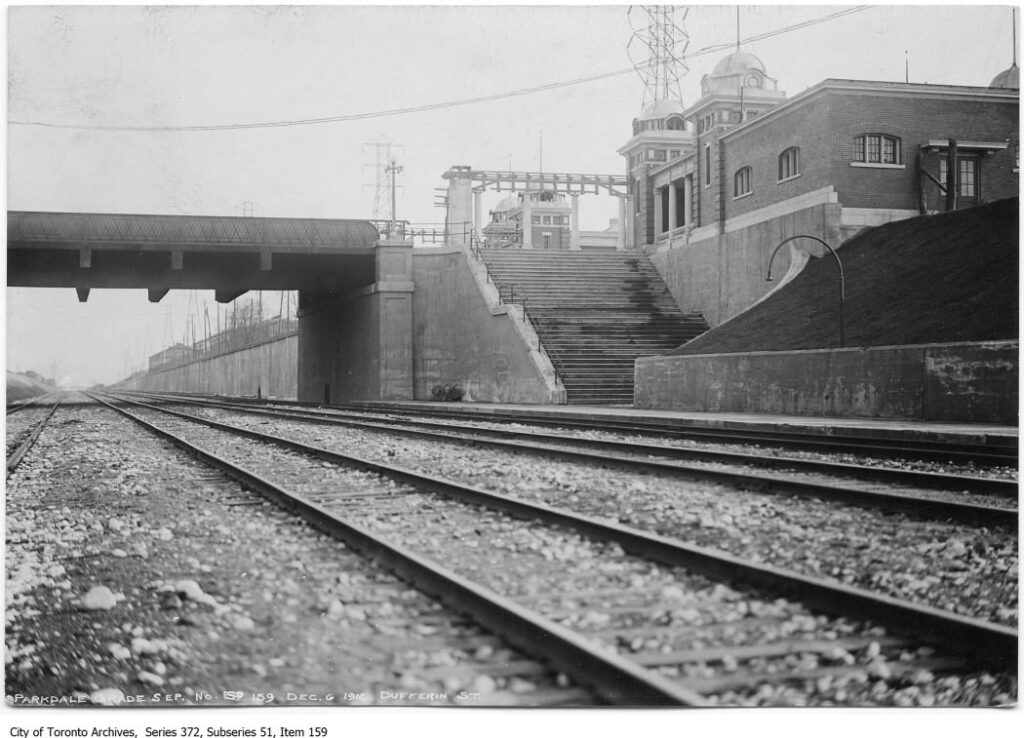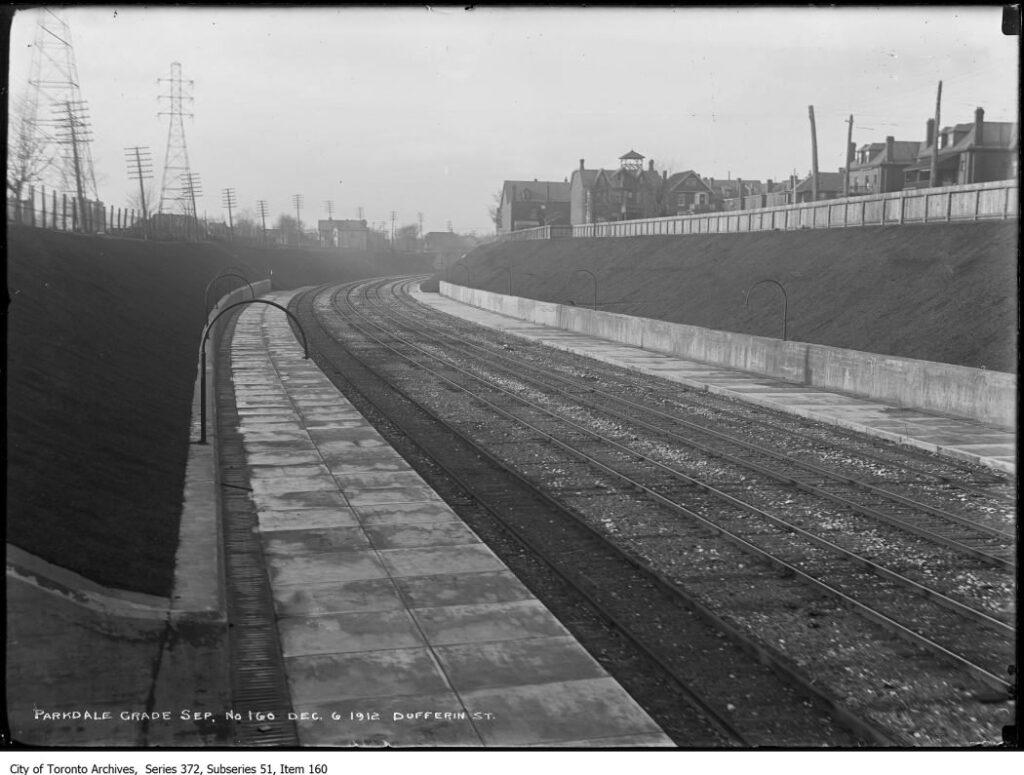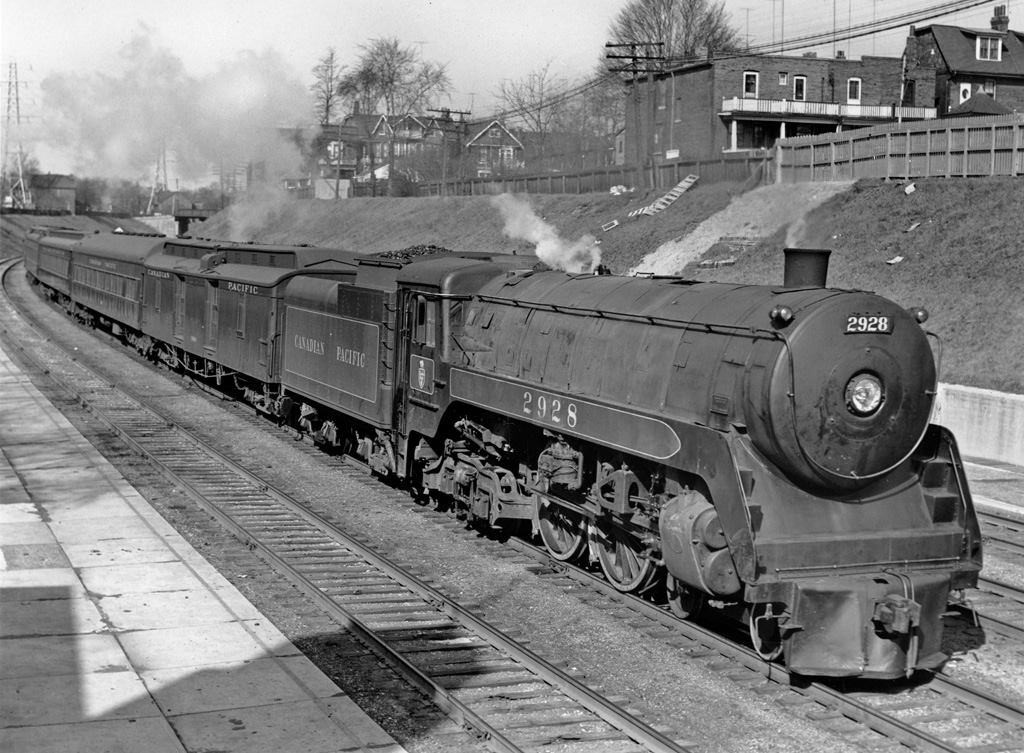Summary
In 1855, the Great Western Railway opened its Toronto Branch just north of modern-day Exhibition Place and parallel with the shore of Lake Ontario. A travelling agricultural fair had existed as a regular event as early as the 1840’s, but it was not until 1878 that the City of Toronto leased the land just south of the Great Western Railway for its permanent Exhibition Grounds. The first Toronto Industrial Exhibition was held in 1879, for which the Great Western Railway opened a platform and ticket office nearby. It was located about 250 metres east of Dufferin Street on the south side of the tracks. While this station appears on numerous maps of the area, no photographs of it are known to exist. The station was only opened to passengers during the annual exhibition, much like all future iterations of Exhibition Station except for the present one. After the Great Western Railway was acquired by the larger Grand Trunk Railway in 1882, the latter would continue to serve Exhibition Station each year.
A proper station building was constructed by the Grand Trunk on the site of the old ticket office around the turn of the 20th Century. This new station, called Exhibition Park, included a board-and-batten exterior with three gables facing the tracks. A train order signal was placed across the tracks from the station, suggesting it might have remained in use as a train order office with a telegraph operator even when not open to passengers. In any case, this station would have an even shorter lifespan than its predecessor. Between 1910 and 1912, the Grand Trunk eliminated a significant hill between Exhibition Park Station and the Humber River. This work resulted in the removal and replacement of multiple passenger stations including Exhibition Park.
A third station was built on the west side of Dufferin Street in 1912. This was just two years after the second Dufferin Gate was built, becoming the primary entrance to the Exhibition Grounds until 1927. The new station did not include any ticket offices or waiting rooms, instead consisting of only two concrete platforms with stairs up to the Dufferin Street bridge. The Grand Trunk Railway suffered from financial problems that culminated in its nationalization, and it was subsequently merged into the Canadian National Railways in 1923. This iteration of Exhibition Station continued as a seasonal stop under Canadian National for 45 years. An urban freeway called the Gardiner Expressway was built within close proximity to the south, resulting in the replacement of the Dufferin Gates in 1958. A provincial agency called GO Transit was formed in 1967 to supplant the waning passenger service offered by Canadian National between Pickering and Oakville. Rather than adapt the existing Exhibition Station, it was closed in 1968 and a new GO Station of the same name was opened a half kilometre to the east.
The third Exhibition Station remains in place to this day despite the existence of the nearby GO station, and it was even briefly reopened for the 1979 Exhibition under the name Dufferin Gates to differentiate it. The purpose was to relieve overcrowding at the Exhibition GO Station, a pervasive problem that continues to plague it. A new Exhibition Station was planned to be built on the existing GO Station site as part of the proposed Ontario Line in 2019, and work on this new station began in March 2022.
Condensed Station Info:
| Location: | Served By: | Current State: | Date Built: | Date Demolished: |
| Dufferin Street | Great Western (1879 – 1882) Grand Trunk (1882 – 1923) Canadian National (1923 – 1968) | Demolished (First & Second) Abandoned (Third) | 1879 (First) ~1900 (Second) 1912 (Third) | ~1900 (First) 1912 (Second) |


